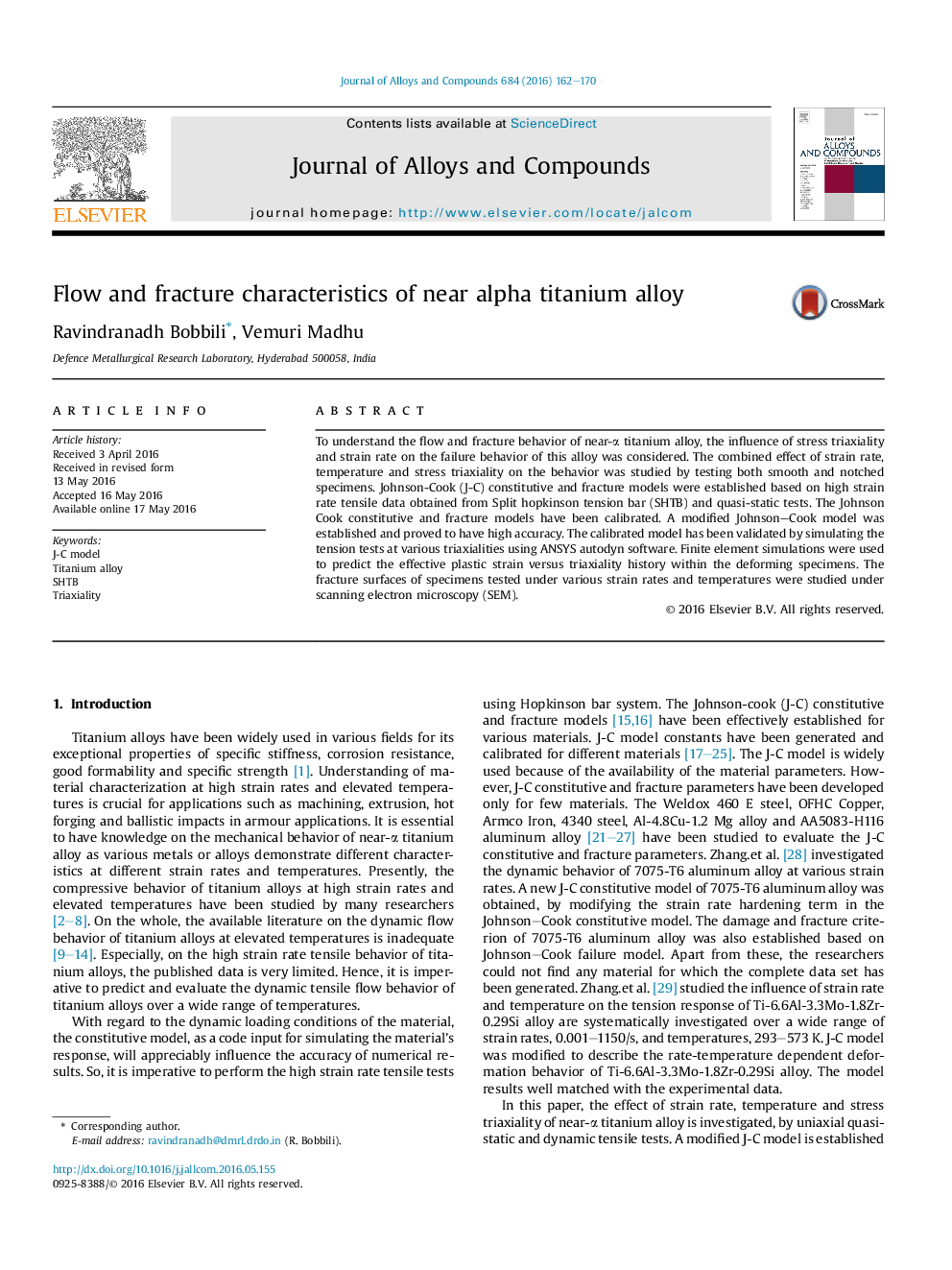| Article ID | Journal | Published Year | Pages | File Type |
|---|---|---|---|---|
| 1605232 | Journal of Alloys and Compounds | 2016 | 9 Pages |
•The combined effect of strain rate, temperature and triaxiality was studied on this alloy.•J-C models were calibrated.•The fracture surfaces of specimens tested were studied under SEM.
To understand the flow and fracture behavior of near-α titanium alloy, the influence of stress triaxiality and strain rate on the failure behavior of this alloy was considered. The combined effect of strain rate, temperature and stress triaxiality on the behavior was studied by testing both smooth and notched specimens. Johnson-Cook (J-C) constitutive and fracture models were established based on high strain rate tensile data obtained from Split hopkinson tension bar (SHTB) and quasi-static tests. The Johnson Cook constitutive and fracture models have been calibrated. A modified Johnson–Cook model was established and proved to have high accuracy. The calibrated model has been validated by simulating the tension tests at various triaxialities using ANSYS autodyn software. Finite element simulations were used to predict the effective plastic strain versus triaxiality history within the deforming specimens. The fracture surfaces of specimens tested under various strain rates and temperatures were studied under scanning electron microscopy (SEM).
